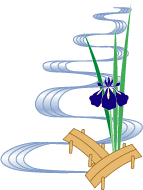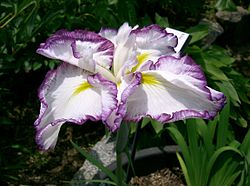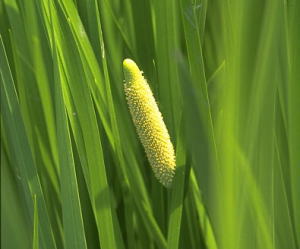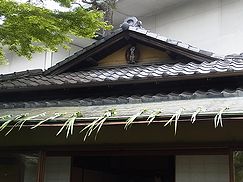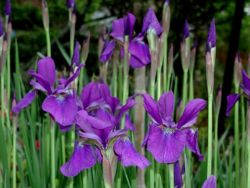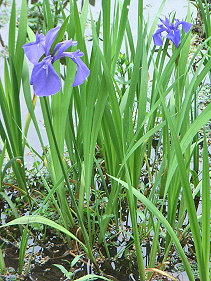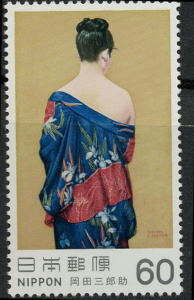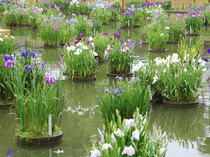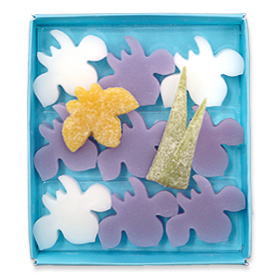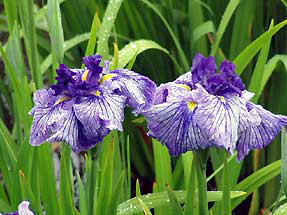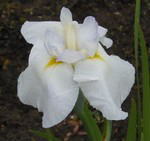Now that I'm free to be myself, who am I?
Can't fly, can't run, and see how slowly I walk.
Well, I think, I can read books.
"What's that you're doing?"
the green-headed fly shouts as it buzzes past.
I close the book.
Well, I can write down words, like these, softly.
"What's that you're doing?" whispers the wind, pausing
in a heap just outside the window.
Give me a little time, I say back to its staring, silver face.
It doesn't happen all of a sudden, you know.
"Doesn't it?" says the wind, and breaks open, releasing
distillation of blue iris.
And my heart panics not to be, as I long to be,
the empty, waiting, pure, speechless receptacle.
Mary Oliver "Blue Iris"
|
|||||||||||||||||||||||
Iris Note Iris, the Goddess of Rainbow |
|||||||||||||||||||||||
| Hi, there! June is the month I like best, maybe because I was born in June. And because in June, hydrangea, magnolia, and iris ... many other big and small flowers bloom. Today, I will write about what Iris means to Japanese mind. Even if a flower is biologically same in different countries, the meaning of it is not always same. It has a back-ground, literally, or historically. "Iris" in Western world is sometimes the Goddess of Rainbow, I heard. The image is a young beautiful girl from Greek myth. But in Japan, iris shows different faces. So please enjoy and understand "Iris in Japan". |
|||||||||||||||||||||||
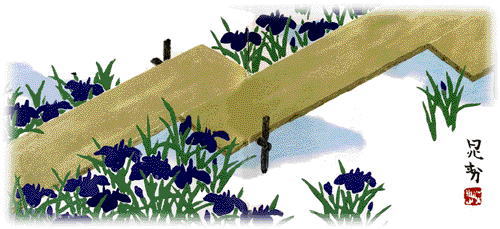 Yatsuhashi Bridge and Kakitsubata Flowers Very famous book "Ise Monogatari" tells about Ariwara no Narihira, a great poet in 9th century Narihira was passing the place called Yatsuhashi Bridge one day in his long journey. Looking at the Kakitsubata flowers, Narihira made a poem, each line starting with one letter of Ka Ki Tsu Ba Ta, thinking of his wife and his home. Well, I hope you are not too confused. Shobu, Hana-Shobu, Ayame, Kakitsubata!!! Which one do you like best? You can say, in this situation, "Well, I don't know which is Ayame and which is Kakitsubata!" This is the right answer in Japanese culture. A Japanese proverb, "Shobu on the 6th, Chrysanthemum on the 10th" is like "Out of date, out of price". Shobu flower must be decorated on May the 5th, that is Tango-no-Sekku, or Boys' Day. On September 9th, Choyo-no-Sekku, chrysanthemum is much used. So, if one day late, there is no need for shobu nor chrysanthemum! The code for Iris is "message, good news, affection, etc." Iris, the Goddess of Rainbow was the messenger of Hera. I hope you will receive a happy message from Iris flowers this month. |
|||||||||||||||||||||||
|
Thank you very much for joining me.
I hope you will visit us again next month. |
|||||||||||||||||||||||
| Mail to Harumi
Okochi |
|||||||||||||||||||||||

